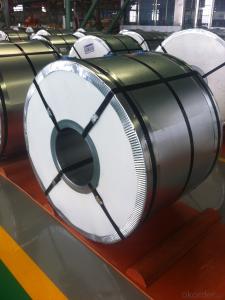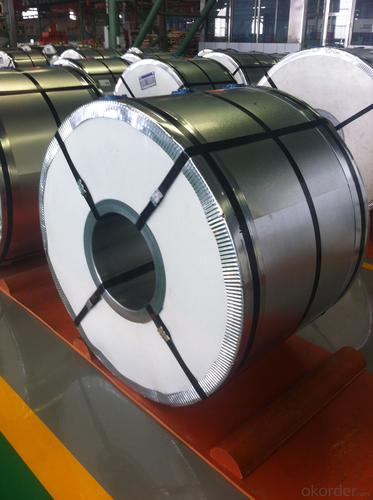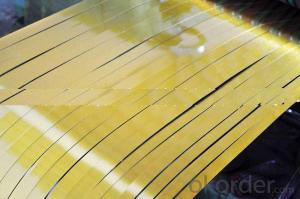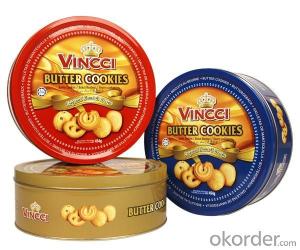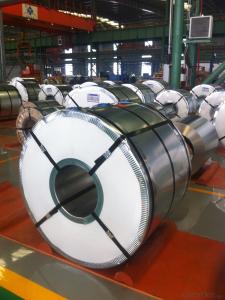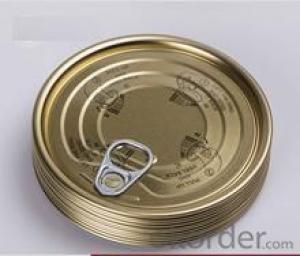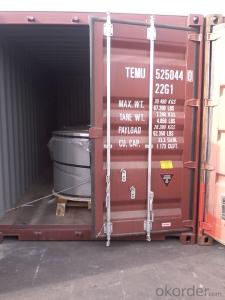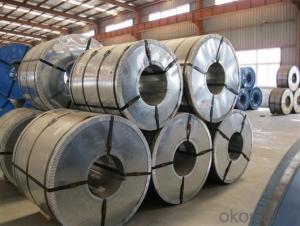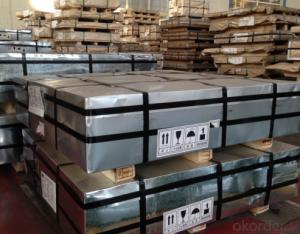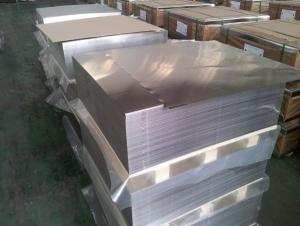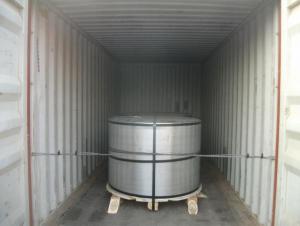Prime Quality Tinplate Sheets for MR,CA,T4
- Loading Port:
- Tianjin
- Payment Terms:
- TT OR LC
- Min Order Qty:
- 25 m.t.
- Supply Capability:
- 8000 m.t./month
OKorder Service Pledge
OKorder Financial Service
You Might Also Like
1.Structure Description
Electrolytic Tinplate Sheets is one of the metal packing materials, which is widely used for making painting cans ,chemical package cans , electrical cable ,battery and metal printing etc.
2. Main Features
Steady and high quality
Fast shipment
Good experience for export work
For the surface, Plate uniform in thickness,uniform and smooth tin coating, without flaws,rusts,scratch,wave,nick of tin coating etc.
Price competitive
3.Images
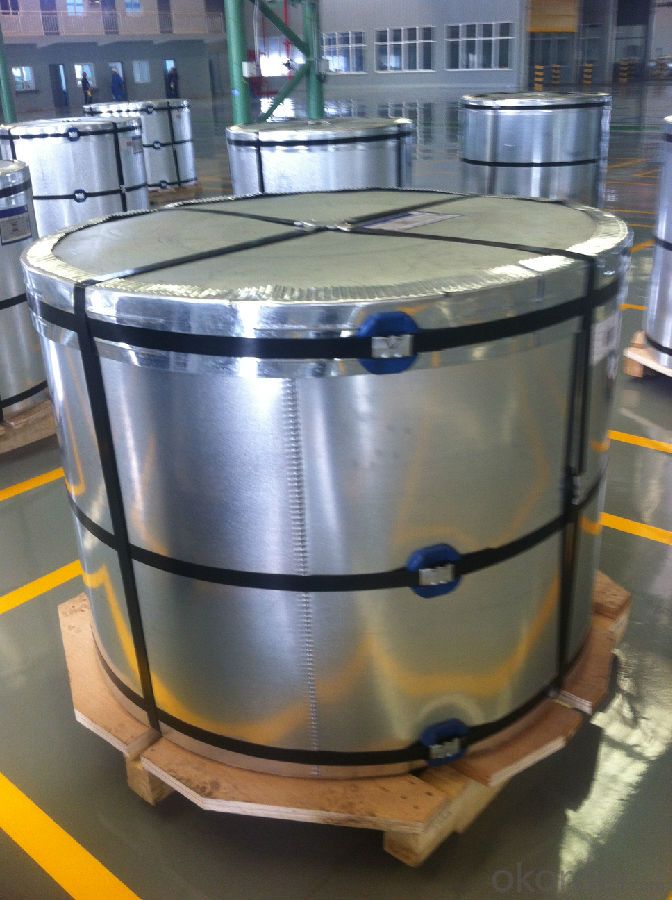
4. Specification
Standard : GB2520-2000 ,JIS G3303
Steel type : SPCC
Coating : 2.8/2.8
Surface: Bright, Stone ,
Thickness:0.26
Width :600MM~1000MM
Temper : T1~T5
Package: tinplate wrapped completely with an inner cover of plastic or waterproof papers with vorners protected with metal angels.
5.FAQ
A. What is the package of tinplate? (Referred as below)
For sheets, thin plastic film + rust-proof paper + metallic cover + metallic angles+ steel band strips + fumigated wooden pallet.
For coil, thin plastic film + rust proof paper + metallic cover + steel band strips + fumigated wooden pallet
B. The surface of tinplate could you supply?
Stone finish, Bright finish, Matte finish, Silver finish
C. What quantity is the minimum order of tinplate?
Usually, the minimum quantity is 25MT. For special case, consult with us.
D. Can it make to be BA or CA for annealing?
Yes, both can do with.
- Q: What are the different methods of joining tinplate components together?
- There are several methods of joining tinplate components together, including soldering, spot welding, adhesive bonding, and mechanical fastening. Each method has its own advantages and suitability depending on the specific application and desired outcome.
- Q: How is tinplate used in the manufacturing of electrical components?
- Tinplate is commonly used in the manufacturing of electrical components due to its corrosion resistance and excellent electrical conductivity. It is often formed into thin sheets and utilized as a protective coating on copper or other metal surfaces to prevent oxidation and ensure prolonged durability. Additionally, tinplate can be shaped into intricate forms, such as cans or enclosures, to house electrical circuits and provide insulation. Overall, tinplate plays a crucial role in safeguarding the functionality and longevity of electrical components.
- Q: What are the main applications of tinplate in the toy industry?
- One of the main applications of tinplate in the toy industry is for creating durable and visually appealing packaging. Tinplate is commonly used to make toy boxes and containers that not only protect the toys but also enhance their overall presentation. Additionally, tinplate is also utilized in manufacturing toy parts and accessories, providing a sturdy and reliable material for various components of toys.
- Q: Can tinplate be used for furniture applications?
- Yes, tinplate can be used for furniture applications. It is a versatile material that offers durability and resistance to corrosion, making it suitable for various furniture components such as frames, panels, or decorative elements. Tinplate's malleability allows for intricate designs, while its smooth surface can be easily painted or coated to match any desired aesthetic.
- Q: Soup with tin cans loaded also need high temperature sterilization?
- At present, there are DN400x500, DN600x1000, DN800*1000, DN900*1000 and DN900x1500 in the market, and the small sterilization pot with boilers is heated by steam. If not, heating by electricity can also be done. The phone won't be left. If you need any service from the manufacturer, you can call me from Hi. The key is not to sell, eliminating confusion is the key.
- Q: What are the main growth drivers for the tinplate industry?
- The main growth drivers for the tinplate industry include increasing demand for sustainable packaging solutions, growth in the food and beverage industry, rising urbanization and disposable income, and technological advancements in manufacturing processes.
- Q: Can tinplate be used for packaging frozen foods?
- Yes, tinplate can be used for packaging frozen foods. It has excellent durability and resistance to temperature fluctuations, making it suitable for preserving the quality and freshness of frozen food products. Additionally, tinplate offers a high level of protection against moisture, light, and oxygen, further ensuring the integrity of the frozen food during storage and transportation.
- Q: What are the common testing methods for tinplate?
- Common testing methods for tinplate include visual inspection for surface defects such as scratches or dents, measurement of thickness using a micrometer or caliper, evaluation of coating adherence through tape or cross-hatch adhesion tests, assessment of corrosion resistance via salt spray or humidity tests, and determination of mechanical properties like tensile strength or elongation through tension tests.
- Q: Can tinplate be used for packaging products with sensitive electronic components?
- Yes, tinplate can be used for packaging products with sensitive electronic components. Tinplate is a material that provides excellent protection against moisture, corrosion, and electromagnetic interference. It also offers good electrical conductivity and is commonly used in the packaging of sensitive electronic devices to ensure their safety and integrity during transportation and storage.
- Q: What are the main challenges in the production of tinplate?
- The main challenges in the production of tinplate include ensuring a consistent quality of tin coating on the steel substrate, controlling the thickness of the tin layer, preventing contamination during the production process, managing the formation of tin oxide, and minimizing the occurrence of defects such as pinholes or scratches on the tinplate surface. Additionally, maintaining a stable and efficient production line, optimizing energy consumption, and complying with environmental regulations are also significant challenges.
Send your message to us
Prime Quality Tinplate Sheets for MR,CA,T4
- Loading Port:
- Tianjin
- Payment Terms:
- TT OR LC
- Min Order Qty:
- 25 m.t.
- Supply Capability:
- 8000 m.t./month
OKorder Service Pledge
OKorder Financial Service
Similar products
Hot products
Hot Searches
Related keywords
